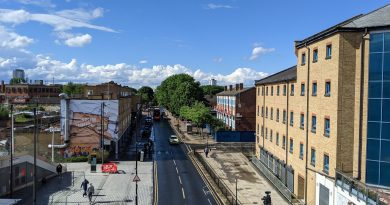Going down the tube? Why are Transport for London passenger numbers stagnating?
In recent months much comment has been made about TfL’s finances as well as stagnating passenger numbers.
A combination of a £700 million cut to its finances from Government made by George Osborne in 2015, Mayor Sadiq Khan’s fare freeze and a slowing economy are all referenced.
Osborne’s cut means London will be one of the only cities in the western world to operate with no central government operating assistance.
Delving into figures does show stagnation this year compared to last looking at the most recent figures to been released, comparing mid November to December 2016 with mid November – December 2017.

It’s a bit of a mixed bag. Bus usage is up, and that’s one area that has really struggled. It rose from 182.7 million to 183.4 million journeys. That’s still less than proceeding years.
Ever-slower bus speeds have had a big impact in recent years.
The Underground fell from 116.7 million to 115.1 million. This will be a cause for concern and probably highlights underlying economic issues but it is above 2015.
London Overground also fell from 15.7 million to 14 million journeys. This was in large part due to the entire closure of the GOBLIN line (which runs from Gospel Oak to Barking) from 27th November to complete delayed electrification.
Once complete, numbers should be boosted as electrification brings cleaner, faster and longer trains.

The DLR fell modestly from 10.1 million to 10.0 on the same period last year. After rapid growth it has essentially stagnated this year.
On the one hand a large amount of housing is being built along many branches but it serves financial districts at Canary Wharf and the City, so any economic downturn would affect it more if that part of the economy is being hit harder.
And as the DLR network reaches a level where trains are very busy meaning staff cannot move down to check tickets, could the barrier-free network be capitalised by those who do not want to pay?
It’s sometimes even easier to avoid paying than Southeastern Metro. Will TfL introduce gates at certain stations in future?
Tram usage rose from 2.1 million to 2.4 million. Last year the network was recovering from a fatal accident.
Away from TfL and passenger numbers on Southeastern Metro lines mostly recorded modest increases in the year to January 2017, though more detailed detailed data is not available.
Other factors that hit TfL last year were terrorist attacks putting off leisure visitors and possibly a cultural shift of more people working from home. It’s been predicted for years. Is it actually happening on a wide level now?
And lastly, with Crossrail arriving this year numbers could again rise. It’ll lessen pressure on incredibly crowded services such as the Central Line making them more appealing.
You can donate to help me with the running of the site here. Many thanks







Has anyone considered the large number of people who now work from home.
I work in the City and in the last 12 months the workforce numbers on my floor has remained the same but nearly 40% work all or some of the time at home.
Unless they get rid of the stupid “this bus is about to move” announcement I predict numbers will fall dramatically, its unbearable.
economist had an article about it recently: https://www.economist.com/news/britain/21734013-higher-fares-and-unreliable-services-are-encouraging-more-people-work-home-why-commuters
Might be ppl working from home indeed. Personally I don’t notice the DLR getting quieter, nowadays already difficult to get on at Cutty Sark
I never give the economist much credence. DLR could be more travelling and not paying as easy to do
I think the difficulty getting on the DLR at Cutty Sark is more due to tourists .
I also wonder if Sadiq Khan is partially trying to implement the expansion of the ULEZ to the N/S circular and the M25 in the future for force people on public transport purely for the TFL coffers (the pollution argument is just the PR excuse that they are pushing).
Once they force more people to get rid of their cars, they will beholding to public transport who keep increasing fairs while service is rubbish. Plus imagine the overcrowding! If struggles currently!
Nope, not tourists, it’s morning rush I’m talking about. Mostly because of the new developments I’d assume. Does vary depending on whether or not trains arrived in Lewisham/Greenwich.
It could still be possible the total nr of people is less because of homeworking on fridays etc.
Surely there are people avoiding payments but doubt there has been a big increase percentage-wise. They do check occasionally.
I take your point.
The high density of flats in the borough I find worrying!
I understand more housing need to be built, but the number of high rises and the type (they are not suited for families or working class) is having a negative affect on the area in my opinion.
The pressure it puts on the infrastructure (included public transport) can’t be underestimated.
Unfortunately there are many jobs that you have to travel to the place of work for, and TFL knows this. They have a captured consumer who has little option other than using public transport and has to accept the fare rises.
I think more and more people are thinking of giving up living and working in London due to the high rents, cost of public transport, war on the motorist etc. Even after considering the premium on the salary, you probably aren’t better off – this is not good for the long term future of the capital.
I personally find commute a big issue when deciding on a job. If it’s in central London, it’s a massive negative.
The cost, unreliability, stress, overcrowding etc etc sometimes doesn’t warrant the extra salary unless the salary is vastly more